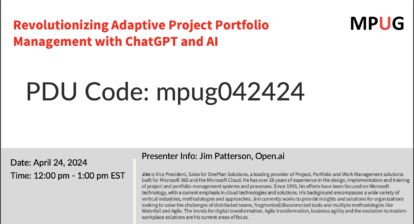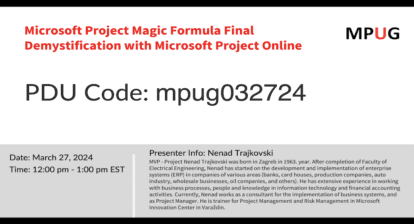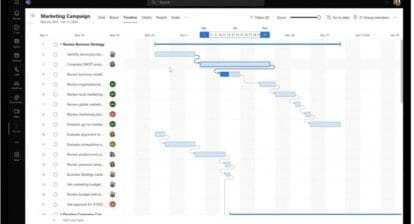Over a decade and a half ago my father and mother visited me in a different city, nearly a thousand miles away from home. Being very young, with few years of work experience, I was struggling to cope with the work pressure, compounded by no family or family friends in a new city with a totally different culture, language, food, and even clothing. My father was very concerned and tried to help in as many ways as he could. He even brought breakfast for me. One day, in jest, I told him that I’ll follow a set of principles to make my work and schedule better. A stern and tough father from the outside, but soft inside, he smiled and said: “Can you follow just a few? Try it. It’s hard!”
But why is following a set of principles so hard? As I’ve seen, in project-program-portfolio management, the primary reason is the constraints. For a project, it’s usually the scope, time, and cost, whereas for the programs it’s the delivery of benefits, and for the portfolio, it’s about the value and value optimization, capacity, and capability.
In addition, saying is always easier than doing. Having principles written in a notebook or project board is always easier than following them. Talking about results from principles is far easier than actually delivering the results!
In this article, we will learn the principles (PR), performance domains (PD), and associated artifacts, and we will also see several examples and applications. Toward the end, I’ll demonstrate how all these fit together.
PMBOK7 Principles (PR)
A principle is a fundamental norm or truth. Now, before getting into the project management principles (PR) informed in the Project Management Body of Knowledge (PMBOK®) Guide, 7th edition, let’s understand certain top points on these principles of project management.
- Principles are not prescriptive in nature, unlike the principles in a profession. They are not laws of project management. They are intended to guide the behavior of the team members and stakeholders.
- Principles of project management serve as guidelines for decision-making and problem-solving in a project.
- Principles can but don’t necessarily reflect morals. Values defined in PMI®’s Code of Ethics reflect morals. The values of PMI are responsibility, respect, fairness, and honesty.
- In total, there are four values and 12 principles. The 12 principles are aligned with the four values and complement them.
- Principles are internally consistent, meaning that no principles contradict other principles. However, in practice, principles can overlap.
The twelve project management principles (PR) are noted in the below table. Each principle has a principle statement, a principle label, or principle tag(s). I’ve outlined only a simplified part of the principle statement in the table.
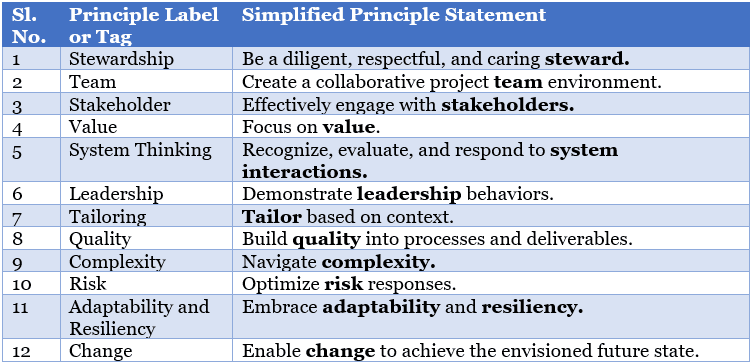
As shown in the above table, there are 12 PRs with principle labels and simplified PR statements. There is also a complete PR statement. For example:
- Complete Principle Statement: Continually evaluate exposure to risk, both opportunities and threats, to maximize positive impacts and minimize negative impacts on the project and its outcomes.
- Principle Label: Optimize risk responses.
It’s the tenth PR in the above table. - Principle Label/Tag: Risk.
If you are preparing for your Risk Management Professional (PMI-RMP)® or Project Management Professional (PMP)® examinations, you have to remember all the principles, labels and understand the principle statements.
PMBOK7 Performance Domains (PD)
Next, let’s understand the performance domains (PD). PMI defines a PD as follows:
A group of related activities that are critical for the effective delivery of project outcomes.
Simply put, it’s a group of related activities. The top points about the performance domain are the following:
- The PDs are interactive in nature, i.e., all the PDs interact or talk to each other.
- The PDs are interrelated. Not a single PD stands on its own.
- PDs are interdependent. Notice that the word, it’s not dependent on each other or even a better form, i.e., independent of each other, but interdependent, which is the highest form of dependency!
- PDs have outcome-focused measures, not output focused. When we talk of output, it’s usually the end product or service, whereas when we speak of outcome, it’s what one can do with that product or service.
- PDs overlap and interconnect with each other.
- PDs are present in every project, but the way in which they relate and interact may differ.
- PDs run concurrently in every project – single, multi-phased, or the way value is delivered.
Do note that although the definition of PD refers to a group of interrelated activities, the specific activities to be considered in each PD are determined by organizational context, project, deliverables, project team, and stakeholders, among others.
There are eight performance domains which are outlined in the below table. I’ve simplified the descriptions so they are easier to understand and remember.
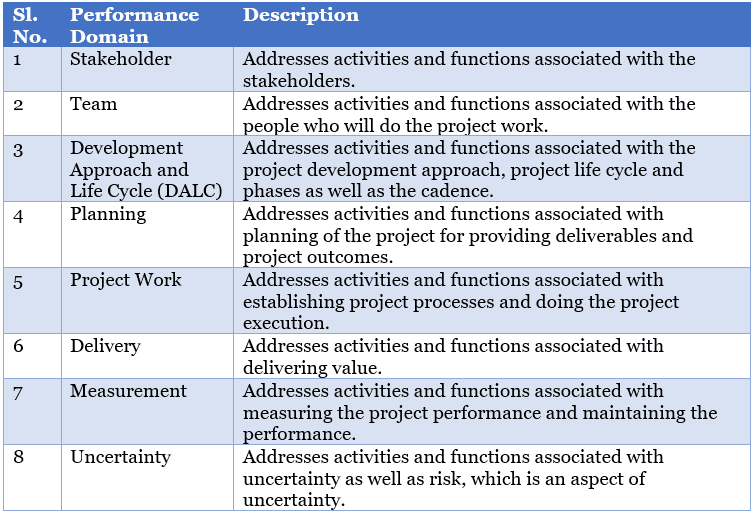
As noted earlier, all eight PDs interact with each other, which is depicted in the below figure.

Specifically considering the Uncertainty PR, which is associated with Risk Management, the following figure can be inferred.

As shown, the Uncertainty PD works in collaboration with all other PDs. For example, considering Uncertainty and Measurement PDs, one can have a risk reserve burndown chart, which shows the amount of contingency reserve available compared to the amount of risk remaining in the project. It’s a variant of burndown charts and can be presented in the Dashboard.
Principles and Performance Domains
Now you may be wondering how the PRs and PDs work together? This concept is very foundational to know as a project, program, agile, or risk management practitioner.
The most important aspect of PR and PD synergy is this:
Principles guide the behavior of the people involved in the project. Performance domains, or simply domains, are broad areas of focus to demonstrate that behavior.
This is shown in the below figure.
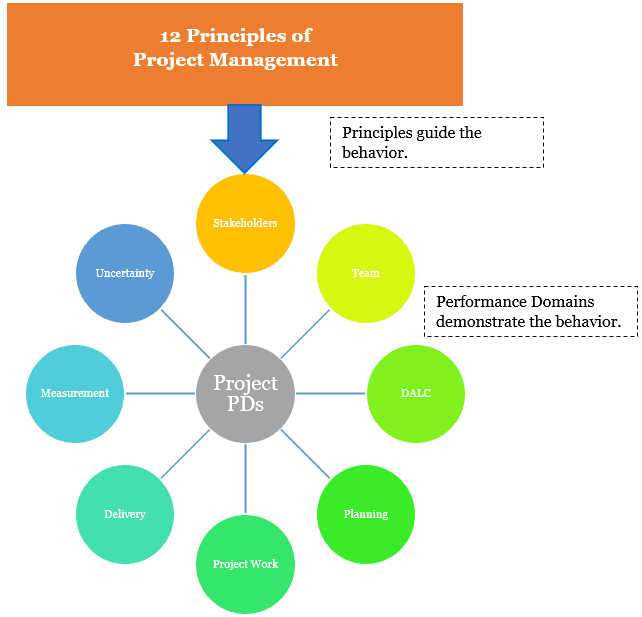
Let’s take the example of Risk principle (PR – 10) and Uncertainty domain (PD – 8) to understand the above aspect.
The Risk PR guides the behavior of the people involved in the project and advises them to maximize opportunities, minimize threats to the project and optimize risk responses. Among others, the Risk principle also tells us to address risk continually, understand risk parameters such as risk attitude, risk appetite, and risk threshold, and subsequently manage and monitor risks in a project.
However, the Uncertainty PD is the broad area of focus to demonstrate what one learned with the Risk PR. Questions such as:
- How to maximize opportunities?
- How to minimize threats?
- How to plan and optimize the risk responses?
- Should one consider one risk or multiple risks?
- Should one consider individual risks, overall project risks, or both?
These questions are answered through demonstration in the Uncertainty PD. In addition, there are other areas such as volatility, ambiguity, and complexity (from the VUCA acronym) in the Uncertainty PD. Therefore, this PD becomes a “broad area of focus” to apply to the Risk PR.
PMBOK7 Artifacts
The way to connect the dots and understand this article is also to know the artifacts. An artifact can be an output, a project document, or even a project deliverable.
Considering risk and uncertainty, we mainly have three artifacts:
- Project Risk Management Plan: How to identify, assess, respond, manage, and monitor the risks in a project.
- Project Risk Register: List of identified risks in a project, also known as the Risk Log.
- Project Risk Report: Summary of individual and overall project risks.
Similarly, when considering other aspects such as Delivery PD, Project Work PD, or Measurement PD, there can be a number of artifacts.
How Do They All Work Together?
So far, we learned about the PRs, PDs, and artifacts. The final part of the PMBOK7 puzzle is to understand how all these work in unison. This is how.
- For every project, while all principles are present, a few principles will be predominantly applied.
- The degree of application of the principles and the way they are applied can vary. It can be based on organizational context, deliverables, project team, stakeholders, etc.
- Performance domains are also present in every project, but then again, we don’t focus on all aspects of the PDs throughout the lifecycle of the project.
- The way PDs relate and apply differ for each project.
- Principles chosen for a project guide the behavior of the project team and project stakeholders, whereas performance domains chosen for the project are areas to demonstrate that behavior.
- The artifacts are used, applied, and can also come from the PDs.
An Example – Risk PR, Uncertainty PD and Artifacts
To understand better, let’s combine the Risk PR, Uncertainty PD, and the associated artifacts. I’ll also inform you of the models and methods involved in this interaction, shown in the figure below.

Let’s interpret the above figure:
- Principles guide the behavior of the people involved in the project. For example, the Risk Principle guides what to do with the uncertainties and risks in the project.
- Domains are broad areas of focus to demonstrate that behavior. For example, the Uncertainty PD is a broad area of focus to demonstrate how risk responses are optimized.
- The Models are applied on the PDs. For example, considering Uncertainty PD, Stacey’s diagram (a complexity model) can be applied. Another complexity model applied is the Cynefin framework.
- The Methods are also applied to the PDs. For example, the probability and impact matrix is a method that can be applied to the Uncertainty PD.
- The deliverables and artifacts are from the PDs. For example, the risk register and risk report are artifacts from the Uncertainty PD.
That’s it! Was it difficult to understand?
If you have read sincerely and understood so far, you have absorbed the very essence of the new PMBOK Guide.
Guidance for PMP and RMP Exams
The most common questions I receive in my regular interactions with management practitioners are with respect to the RMP and PMP exams. PMBOK, 7th edition has taken a paradigm shift compared to the PMBOK, 6th and the practitioners want to know their usages and needs in the new versions of the PMP exam.
Is PMBOK7 needed for the RMP Exam?
The short answer is yes.
Elaborating further, one of the RMP exam’s explicit reference sources is the new edition of the PMBOK 7th edition, which has a principle-based standard. This is well-complemented with the PMBOK 6th edition, which is a process-based standard. For your RMP exam, you must refer to both, because the main source of the exam is the Foundational Standard for Risk Management in Portfolios, Programs, and Projects, which follows a process-based approach with a set of risk management principles.
Is PMBOK7 needed for the PMP Exam?
The short answer is no.
You’ve probably seen many sites, portals, and exam preparatory courses inform on the PMBOK Guide, 7th edition as a must-read. In reality, at the time this article is written, it’s a should- or could-read. Nevertheless, knowing the latest management principles, practices, and artifacts is a good idea. Recent PMP and RMP success stories in 2023 from my management sessions indicate that.
Conclusion
To wrap up this article, principles by their very nature are self-evident, true, and real. For example, the principle of “Demonstrate leadership behaviors” applies not only to the project manager but also to every team member.
Principles will light up the path for your practices. While principles are guidelines, practices are real-world usages. These practices are performed with activities and functions in the performance domains that we have reviewed here.
I hope you now have a big picture as well as a zoomed-in view of the PRs, PDs, artifacts, and how they all fit together. As always, your thoughts, views, and comments are welcome. Please share them in the comment section below.
—
This article is dedicated to the memory of my father, the late Harendra Nath Dash, who passed away four years ago on June 11, 2019. It’s a tribute to him, my mother, and their teachings.
And thank you, dear readers, for reading this piece.
References
[1] RMP Live Lessons – Guaranteed Pass or Your Money Back, by Satya Narayan Dash
[2] RMP 30/40 Contact Hours with Money Back Guarantee, by Satya Narayan Dash
[3] I Want To Be A RMP: The Plain and Simple Way To Be A RMP, Second edition, by Satya Narayan Dash [4] Project Management Body of Knowledge (PMBOK) Guide, 7th Edition, by Project Management Institute (PMI)


